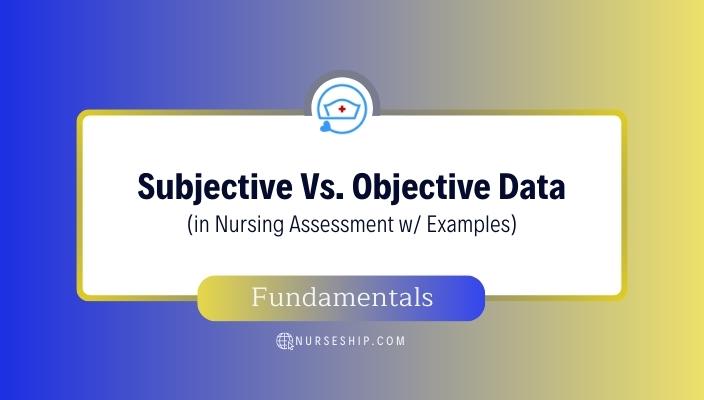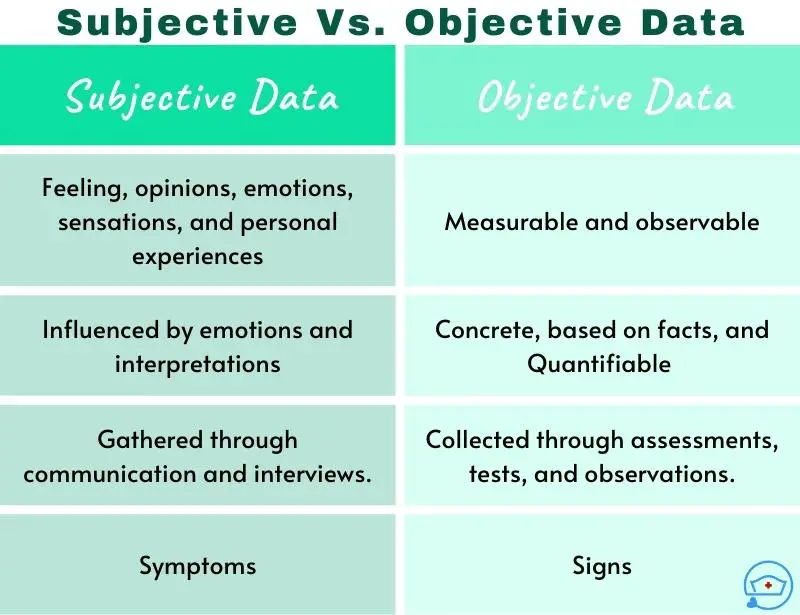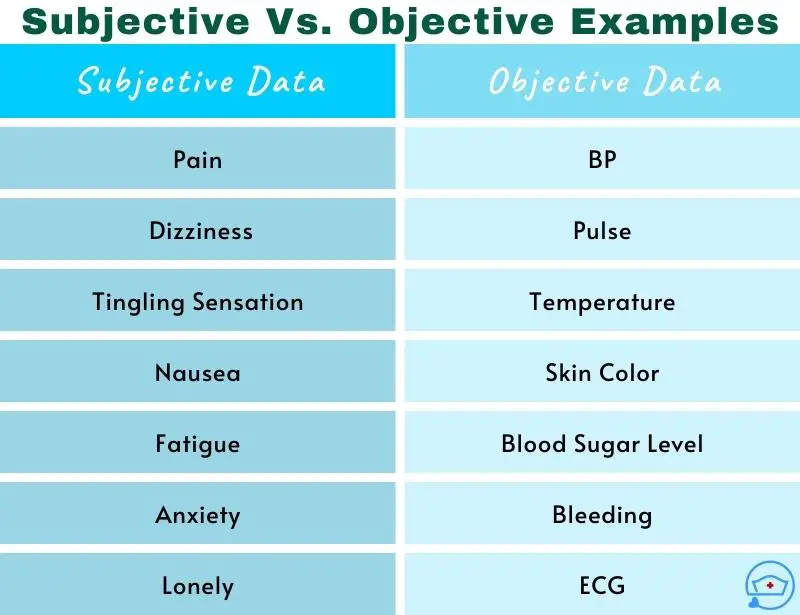

Data collection is a component of the Nursing Assessment, which stands as the initial step in the nursing process.
There are two types of data collection in nursing. They are; i. subjective and ii. objective data.
Effective patient assessment and care planning are built on these two types of data.
In this article, we’ll explore the concepts of subjective vs objective data, provide real-life examples, and offer insights into their significance in clinical practice.

Subjective data in nursing refers to information obtained through patient communication, capturing their opinions, emotions, sensations, and personal experiences.
It relies on the patient’s perspective and is often influenced by their individual feelings and interpretations.
These are often referred to as symptoms.
Subjective data can be defined as information that’s unique to the patient’s personal experience and can be described by them.

Both subjective and objective data play vital roles in patient care.
Subjective data provides insight into a patient’s perspective, emotions, and experiences, enhancing holistic care.
Objective data offers concrete information for accurate diagnoses and treatment planning.
To provide comprehensive care, nursing professionals must integrate both subjective and objective data.
Combining these two types of information allows for a holistic understanding of the patient’s health status and enables evidence-based decision-making.